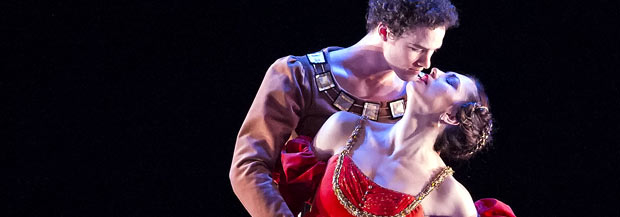
© Gene Schiavone. (Click image for larger version)
American Ballet Theatre
Theme and Variations, The Moor’s Pavane, A Month in the Country, Piano Concerto #1
New York, David H. Koch Theater
6-7 November 2013
www.abt.org
Dancing at the Koch
On Sunday, American Ballet Theatre’s two-week fall season draws to a close. By most measures, it’s been a success. The Koch Theater (formerly the State Theatre) is certainly New York’s most dance-friendly house, with its quiet, well-proportioned stage, excellent sight lines, and expansive pit. (As the conductor Ormsby Wilkins pointed out to me, the orchestra sounds better here than it does at the Met). Some of the intimacy of City Center is lost, of course, but the tradeoff is clarity and a feeling of space framing the choreography. The company’s mixed bills are also an opportunity for up-and-comers and soloists – dancers who usually get relegated to smaller secondary roles at the Metropolitan – to show their mettle. The audience gets to see the “real” company, the dancers who enter as apprentices or members of the corps, and then rise through the ranks. It’s heartening to see dancers like Gemma Bond, Joseph Gorak, Calvin Royal, Skylar Brandt, and Gabe Stone Shayer rise to the occasion. The longtime soloist Stella Abrera, shone with quiet assurance in ballets from Bach Partita to A Month in the Country.
It’s also intriguing to watch new arrivals like James Whiteside and Polina Semionova – both of whom joined in the last two years – settling into the company’s repertory. Both danced Theme and Variations, though not together. Of the male principals I saw, Whiteside came the closest to revealing the work’s dynamic range, though his dancing lacks polish. But he creates drama with the steps. His Caliban, in Alexei Ratmansky’s new Tempest, was wilder and more uninhibited than Herman Cornejo’s, who seemed to struggle with the character’s lack of clear definition. Does Prospero’s monster have a soul? Having concluded that he does not, Whiteside had more freedom to revel in the creature’s animal qualities, groveling, flinging himself through the air, and lasciviously pawing at Miranda.
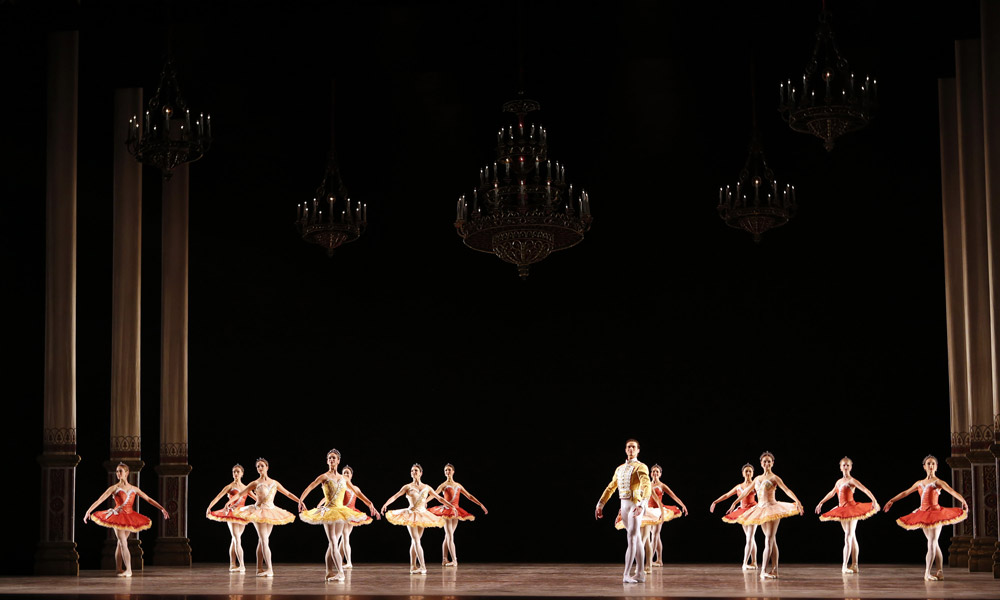
© Marty Sohl. (Click image for larger version)
Semionova, a dancer who seems quite unfazed by ballet’s technical demands, brings an aura of femininity and loveliness to every role. She is particularly luminous – indeed, happy-looking – when in a partner’s arms, exploring the choreography together. This was especially true in Theme (I caught the Nov. 7 performance). When she danced alone or framed by the female corps, her dancing was immaculate, even-toned, and a little pallid. It looked almost too easy, lacking the deeper, almost spiritual dimension some ballerinas have brought to the role. But when she was united with her partner, Cory Stearns, in the pas de deux, she became playful, warm, and expansive. For his part, Stearns, with his long, muscular physique and elegant lines, continues to be an elusive performer. He has the chops – beautiful, soft jumps, centered turns, good partnering instincts – but seems unwilling to put himself forward, to seize the music and accentuate the steps. In some ballets, like The Tempest, his restraint lends a certain gravitas to his characterization; he allowed his long legato lines and muscular port de bras do the talking. Only once in a while does he truly let go, as he did in his unnerving, almost parasitic interpretation of Iago in José Limon’s The Moor’s Pavane (Nov. 6). Maybe he feels freer when he gets to play the bad guy.
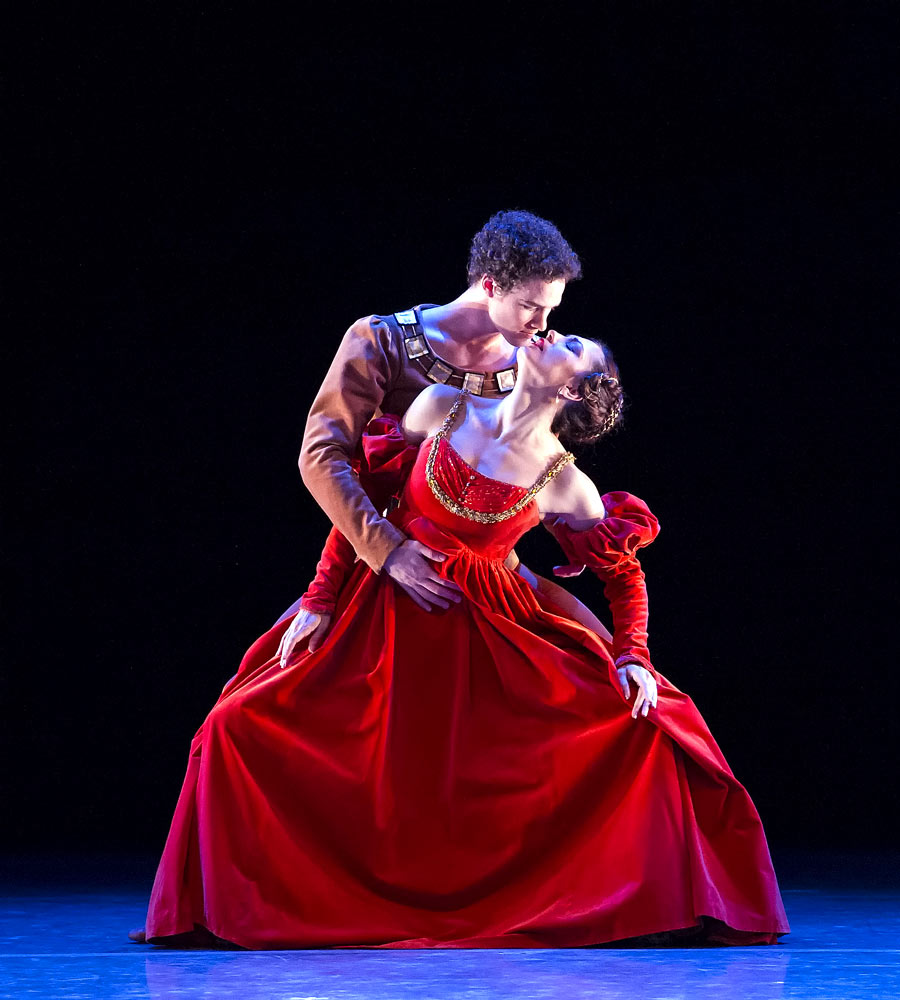
© Gene Schiavone. (Click image for larger version)
This performance of Moor’s Pavane, Limón’s pared-down retelling of Shakespeare’s Othello, was one of the best I’ve seen. Veronika Part played Iago’s wife, Emilia; Hee Seo was the ill-fated Desdemona. The ballet is a miracle of economy, transporting us from courtly ritual to murder in a neat twenty minutes, with not a second to spare. The steps and gestures imagined by Limon – Iago’s leg wrapping around Othello as he whispers treacherously into his ear – are so uncannily appropriate that almost any cast can get the point across. But it is rare to see four dancers illustrate their characters with real, human emotion. Here, the Moor was played by Roman Zhurbin, the company’s most compelling actor (by a long shot) – this is the man who can make King Floristan seem like an interesting, well-rounded character. Veronika Part’s wide, deep stance and voluptuous shoulders lend her Emilia an aura of terrifying power. She holds her own against Iago. Desdemona, always the weakest character, was danced by Hee Seo with a lyricism that belied a burning sensuality. It was evident from the start why Zhurbin’s Othello and Seo’s Desdemona are together – the erotic aspects of their love ooze through the steps. Zhurbin’s Moor is weakened by his possessive love, and this weakness makes him susceptible to Iago’s lies. At this performance, the final duet between Zhurbin and Seo was made even more devastating by the realization that, despite his jealousy, Othello is still madly in love with his wife. For a moment it seemed that Zhurbin’s Othello might be willing to forgive. Zhurbin’s grasp of Othello’s humanity makes the monstrosity of his subsequent actions feel even more monumental.
Frederick Ashton’s Month in the Country, based on Turgenev’s play, shows us another kind of love: bourgeois, idle, but no less overwhelming, in its own modest way. The story takes place on a Russian country estate, not so different from the setting of Onegin or Uncle Vanya. A well-to-do family with too much time on its hands; a distracted husband, a bored wife still hungry for flirtation, but beginning to sense the terrifying signs of middle age. An ineffectual but sympathetic admirer. A handsome, innocently ardent young tutor who turns the household upside down. A blushing teen-aged girl, suffering her first love pangs. An energetic boy who understands only a small fraction of what is happening around him – isn’t that what childhood is all about? One feels that Ashton understands everything about his characters – perhaps even more than Turgenev did – and loves them, weaknesses and all. Each is depicted from his or her own point of view, with sympathy and dignity. No-one is a caricature, though touches of humor and ridiculousness abound–but aren’t we all ridiculous in one way or another?

© Marty Sohl. (Click image for larger version)
The Nov. 7 cast was particularly felicitous. Julie Kent’s portrayal of Natalia Petrovna is touching, unstinting in both her vulnerability – her heart seems to literally skip a beat as Guillaume Côté, the handsome tutor, takes her hands in his – and her histrionic, conniving nature. Petrovna is a silly, vindictive woman, dignified by her helplessly lovelorn state. Kent gets all the subtleties of the character. Gemma Bond, as young Vera, is equally multi-hued, if not quite so profound: sweet and eager in the opening scene, desperate and determined to get her way in her pas de deux with Beliaev, and furiously righteous – as only an adolescent wronged can be – when she discovers Petrovna’s dalliance with Beliaev. Côté, on loan from the National Ballet of Canada, was débuting in the role of the tutor, and yet he seemed to instinctually capture the character’s mix of innocence, heedless sensuality, and ardor. Beliaev is a young man (almost a boy) who does not yet know how to control his emotions, or how to mitigate the effect of his beauty on others. His duet with the frisky Russian maid – danced with great charm by Stella Abrera – was suffused with pure playfulness mixed with a touch of sensuality. If it weren’t Petrovna, it might well have been the maid. But Côté reveals something more, a development in the character’s self-knowledge. In the scene in which the dalliance is revealed, Côté sits quietly on the couch; humiliation and shame register very clearly on his face and in his slightly bowed body. From innocence to self-knowledge in an instant. Neither Roberto Bolle nor David Hallberg, last season, attained quite this level of understanding, or showed us why, exactly, every member of this happy little family falls in love with Beliaev.

That same night, several dancers débuted in Piano Concerto #1, the final installment of Alexei Ratmansky’s Shostakovich Trilogy, new last season. The piece holds up well, even on its own. The skewed poses and bold patterns – men advancing across the stage with women on their shoulders, like a battalion of tanks, then spinning so that they become a turbine – are as surprising, stylish, and impactful, as they were in the spring. The contrasting lead couples – one strong, heroic, the other more enigmatic, sinuous – share an extended double pas de deux in which the mood gradually shifts. At the start, it is characterized by an almost galactic serenity; the dancers slide across the stage, weightlessly. Then comes a passage of turbulent yearning that gradually intensifies and becomes a sense of almost religious surrender. Like Shostakovich’s glimmering music, the entire movement is both mysterious and powerful. The new dancers took to the ballet like fish to water. Gillian Murphy, who was supposed to appear in the original cast but suffered an injury, was, as usual, as strong and bracing as a zephyr. She was stylishly partnered by Calvin Royal, who danced this same role in the spring; he has added more musical nuance to his interpretation. Gabe Stone Shayer, whose Ariel last week brought a new meatiness to that character, was impressively self-assured in the role created for Ivan Vasiliev, all pawing legs and torqued virtuosic leaps. There is a particularly lush quality to Shayer’s jumps (he trained at the Bolshoi school). Most impressive of all, though, was Skylar Brandt, a tiny dynamo in the corps, dancing the role originally made for Natalia Osipova. Clean, crisp, fast-moving, and endowed with a nimble jump, Brandt slipped effortlessly into the role created for Natalia Osipova. She seemed to barely touch the ground, like a sprite. The whole company, at the Koch, looks energized.













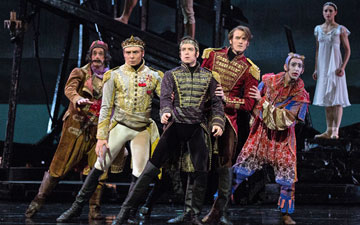
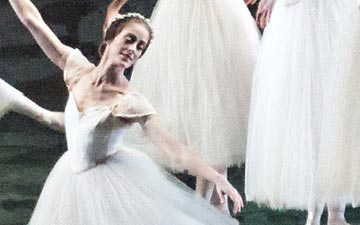

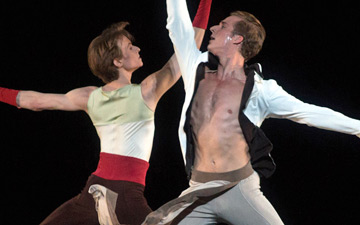
You must be logged in to post a comment.